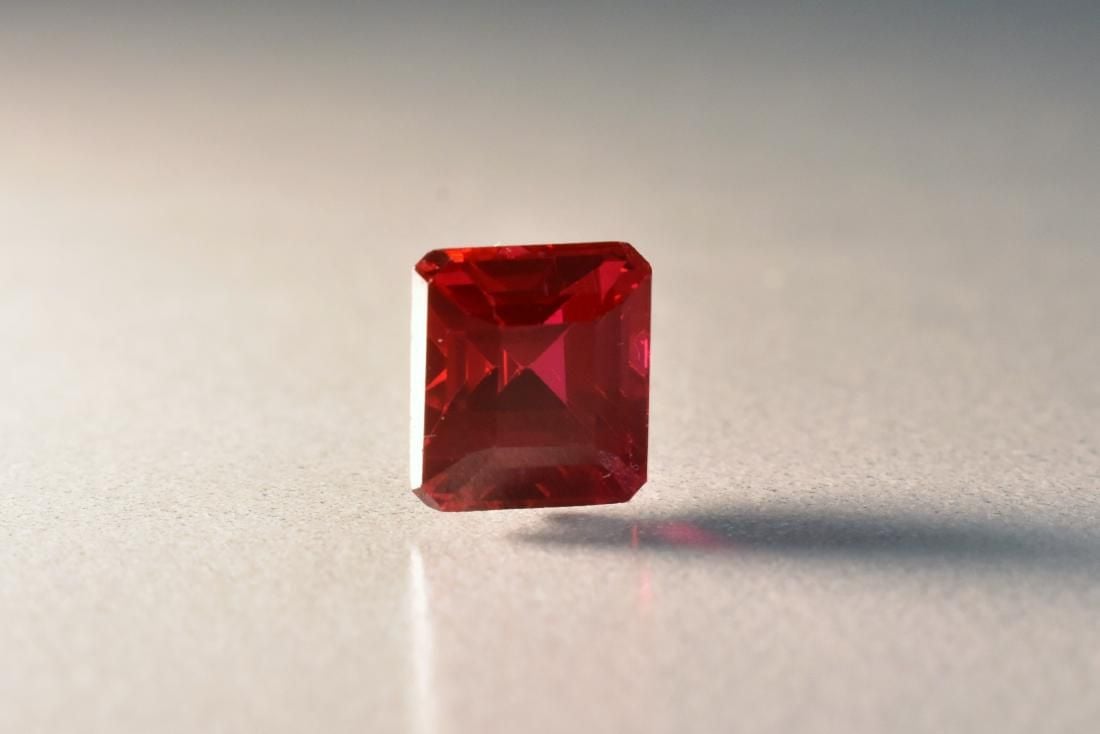Properly Charging Ceramic Laps
A ceramic lap is an excellent choice for polishing gemstones. Here is a guide for properly charging ceramic laps and avoiding scratching.
3 Minute Read
Answer: Ceramic laps are a good choice for polishing very hard gemstones like corundum and diamond. They work very well, but getting the diamond polish on them in the proper manner and proportion is extremely important. Properly charging ceramic laps will prevent scratching.
A Step-By-Step Guide for Charging Ceramic Laps
I have multiple ceramic laps and use them with 8, 14, 50, and 100k grit diamond. I admit, there are probably as many methods for charging ceramic laps as there are faceters that use them. This method works for me.
- First, scrub a new (or used) lap vigorously with lots of hot water, soap, and a piece of steel wool. For soap, I've used Lava, liquid dish soap, and, once, laundry detergent when I didn't have anything else handy. Doing this removes all traces of old grit, oil, fingerprints, etc. Make sure to have the water as hot as you can stand to have your hands in.
- Next, dry the lap with a clean paper towel. At this point, don't allow anything to come in contact with the face of the lap that might contaminate it, including finger tips! Hold the lap by the rim and the hole in the middle. The lap should still be warm from the hot water. Once it's dry, let it cool down. This will allow any residual moisture to evaporate.
- Once the lap is cool, place three or four drops of the oil of your choice on the lap. I usually use a diamond extender. Don't bother to spread it around yet. If your diamond is in those little plastic jars, just put your finger on the end of the container and get some diamond on the end of your finger. If you need to put a little film of oil on your finger to make the diamond stick, that's OK.
- Now put your diamond-coated finger right onto one of the drops of oil on the lap and smear it around as far as it will go. Get an even, gray coat of diamond all around the lap. You'll probably have to repeat the "dip the finger in the diamond" routine for each drop of oil on the lap. Resist the temptation to spin the lap on the machine to spread the diamond, because the oil and diamond have a tendency to sling off. Just smear it around with your finger. Don't worry about getting too much diamond on the lap, because you'll wipe it off in a minute. (On the other hand, don't get a lot of diamond on the lap, because you'll wipe it off in a minute).
- Once there is a fairly even, gray coat of diamond easily visible all over the face of the lap, wipe it off with a dry, clean, paper towel or cloth. Wipe it off until the lap looks clean. After the lap is wiped off, it should look evenly white and clean, not gray or oily. Resist the urge to leave "a little diamond" on the lap. The diamond that you can't see when you finish wiping the lap will be more than enough.
The lap is now charged and ready to use.
Making Adjustments
Don't use a lot of pressure with ceramic laps because heat build-up can be a problem. When the cutting/polishing action seems to slow down, add a drop of diamond extender, spread it around the lap, and then wipe it off. (Just like the steps for charging ceramic laps above). This will remove the swarf and redistribute the diamond on the lap.
How Frequently Do Ceramic Laps Need to be Charged?
Charging ceramic laps doesn't need to be done very often. Depending on the size and type of material you're cutting/polishing, the grade of diamond (8,000, 14,000, etc) you're using, and the ceramic lap brand you have (not all ceramic laps are created equal), you might have to charge your lap every 10-15 stones.
Good luck,
Randy Frey
International Gem Society
Related Articles
Gold Refining Advice for Jewelers
What Causes Fuzzy Refractometer Readings?
Beginning Wax Casting: Resources For Jewelry Makers
The Path to Success in the Gem Trade
Latest Articles
Ruby and Sapphire Survey: Where Do You Draw the Line?
Quartz Toxicity: Understanding the Risks for Jewelers and Wearers
Synthetic Amethyst: What is it and How is it Made?
Hambergite Value, Price, and Jewelry Information
Never Stop Learning
When you join the IGS community, you get trusted diamond & gemstone information when you need it.
Get Gemology Insights
Get started with the International Gem Society’s free guide to gemstone identification. Join our weekly newsletter & get a free copy of the Gem ID Checklist!
